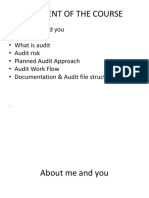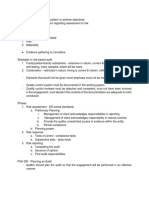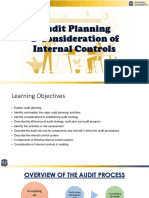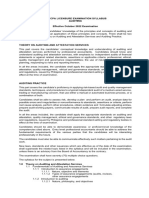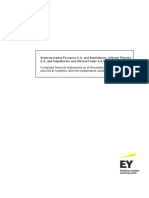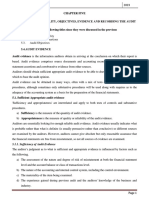0% found this document useful (0 votes)
4 views3 pagesCourse Outline
The document outlines a comprehensive course on assurance and audit services, detailing learning outcomes across various topics such as assurance engagements, audit processes, internal controls, fraud considerations, and audit reporting. Each section includes specific objectives, definitions, and procedures relevant to the audit field. The course aims to equip participants with the necessary knowledge and skills to effectively conduct audits and understand the associated principles and practices.
Uploaded by
jbechaydaCopyright
© © All Rights Reserved
We take content rights seriously. If you suspect this is your content, claim it here.
Available Formats
Download as DOCX, PDF, TXT or read online on Scribd
0% found this document useful (0 votes)
4 views3 pagesCourse Outline
The document outlines a comprehensive course on assurance and audit services, detailing learning outcomes across various topics such as assurance engagements, audit processes, internal controls, fraud considerations, and audit reporting. Each section includes specific objectives, definitions, and procedures relevant to the audit field. The course aims to equip participants with the necessary knowledge and skills to effectively conduct audits and understand the associated principles and practices.
Uploaded by
jbechaydaCopyright
© © All Rights Reserved
We take content rights seriously. If you suspect this is your content, claim it here.
Available Formats
Download as DOCX, PDF, TXT or read online on Scribd
/ 3


